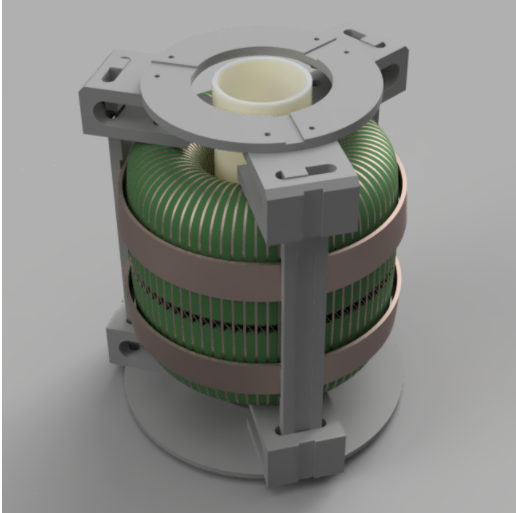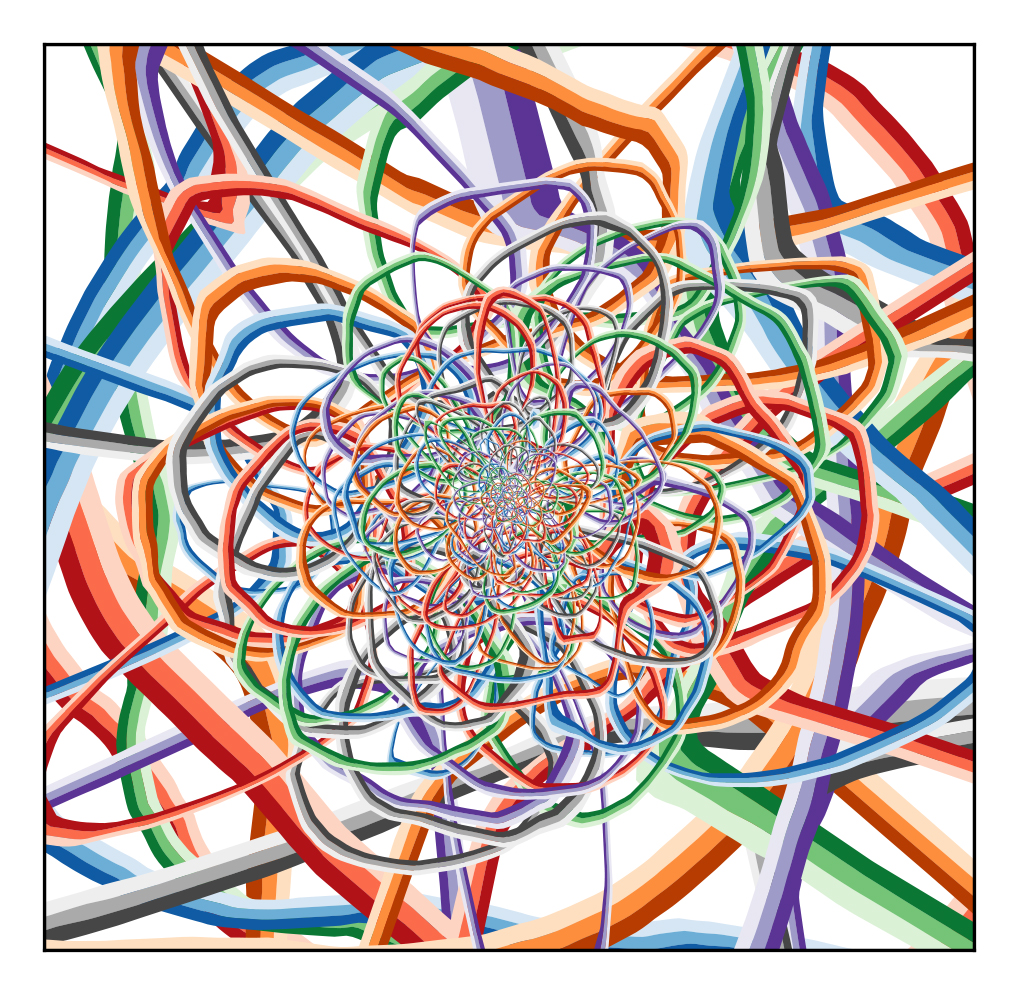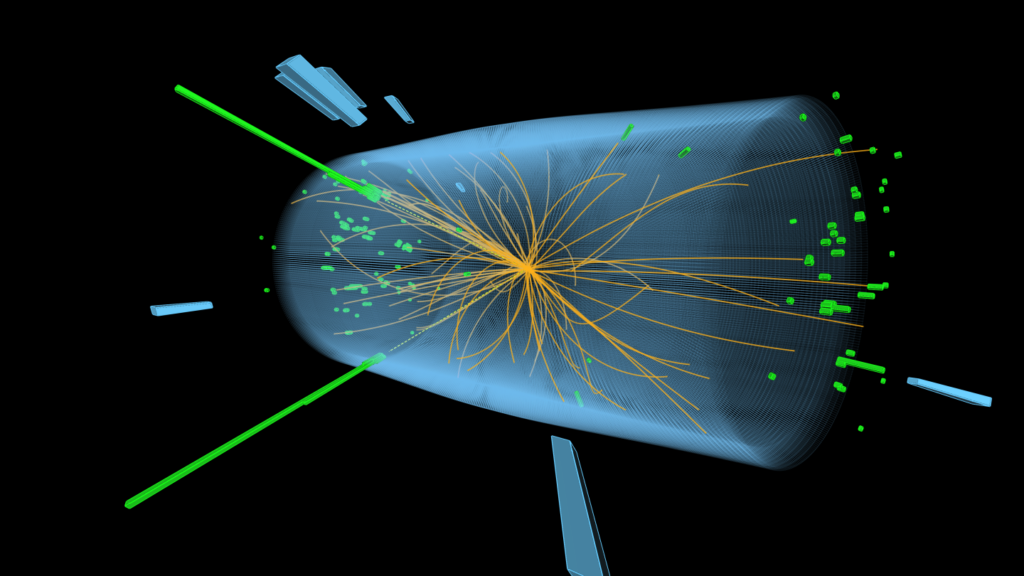High Energy and Particle Theory
The goal of high-energy and particle theory research in the Center for Theoretical Physics (CTP) is to enable discoveries of physics beyond the Standard Model (BSM), both through precision tests of the Standard Model itself and through detailed studies of possible new phenomena. With the momentous discovery of the Higgs boson at the Large Hadron Collider in 2012, the Standard Model of particle physics is now complete, yet its shortcomings loom larger than ever. For example, the Standard Model cannot account for the nature and origin of dark matter, nor does it address the puzzling hierarchy between the electroweak and Planck scales. On cosmological scales, questions remain about what drives the accelerating expansion of the universe, both today and during the inflationary epoch.
For this reason, high-energy and particle theorists in the CTP are developing new theoretical frameworks to address physics in and beyond the Standard Model. The current effort in the CTP includes research that has a direct impact on experiments as well as research that pursues more formal theoretical directions. CTP researchers study possible new physics signatures at dark matter detection experiments, cosmological observatories, accelerators like the Large Hadron Collider, high intensity experiments, and small-scale table-top devices. At the same time, research in particle theory offers opportunities to push the boundaries of knowledge in quantum field theory (QFT), and innovations and creativity in QFT has long been a theme that unites the research conducted in the CTP.
The CTP has a long history of leadership in high-energy and particle theory. Emeritus faculty Dan Freedman, Jeffrey Goldstone, and Roman Jackiw are responsible for some of the fundamental theoretical ideas – especially those associated with symmetries and symmetry breaking – which lie at the heart of the Standard Model and its extensions. Frank Wilczek is one of the authors of the Standard Model and a pioneer in the study of axions and anyons, with long-standing interests in unification and supersymmetry. Eddie Farhi and Robert Jaffe have taken techniques developed in particle theory and applied them to the fields of quantum computation and fluctuation physics, respectively. Tracy Slatyer and Jesse Thaler represent the next generation of particle theorists, whose work draws on experimental and theoretical developments in areas ranging from dark matter detection to quantum chromodynamics to formal supergravity.
Successful high-energy and particle theorists have an appreciation and understanding of experimental and observational methods. The CTP prides itself on maintaining close connections to experimental research conducted in the Laboratory for Nuclear Science and the MIT Kavli Institute for Astrophysics and Space Research.
Dark Matter and BSM Model Building
Dark matter is a key research direction in the CTP, bridging particle physics and astroparticle physics (see Cosmology page). The gravitational evidence for dark matter is overwhelming, but the nature and origin of dark matter is still unknown. The two leading paradigms for dark matter are axions and massive stable relics (possibly of supersymmetric origin), but given the lack of any conclusive dark matter signals to date, CTP researchers are taking imaginative approaches to dark matter and its potential signatures. Jesse Thaler and Tracy Slatyer have developed innovative models for dark matter in the context of expanded “dark sectors”, where the dark matter interacts with other new particles and forces. These scenarios can produce new and unexpected signals in Earth-based experiments – at particle accelerator laboratories or underground neutrino detectors – as well as in astrophysical and cosmological data. Jesse Thaler proposed the original idea for the ABRACADABRA experiment searching for ultralight axion dark matter, which is led by Lindley Winslow of the Laboratory for Nuclear Science. Iain Stewart and Tracy Slatyer are collaborating to apply powerful techniques from effective field theory, originally developed to study physics at the Large Hadron Collider, to the case of signals from heavy colliding dark matter particles.

QCD and Collider Physics
Jet physics is an area of continued importance for particle phenomenology, especially at hadron colliders like the LHC. Jets are collimated sprays of particles that arise when quarks and gluons are produced at high energies, and copious jet production is a potential smoking gun for various scenarios beyond the Standard Model. Jesse Thaler has been at the forefront of the emerging field of jet substructure, developing new jet analysis techniques to capitalize on the exceptional ability of the LHC experiments to resolve jet constituents. These jet substructure methods can enhance BSM signals above Standard Model backgrounds, and they are currently being implemented in new physics searches by the MIT CMS pp group. These methods have also revealed fascinating new insights into the dynamics of QCD at high energies. Iain Stewart and Jesse Thaler have developed new techniques to perform precision jet calculations, capitalizing on recent development in applying resummation techniques to hadronic collisions. Jet substructure has offered new probes of the phenomena of jet quenching in the quark/gluon plasma, an area of considerable interest to the MIT CMS heavy ion group. More recently, machine learning techniques have offered new ways to disentangle and visualize jet properties.

Higgs Precision Physics
Higgs physics is another area of continued importance, especially with plans for precision Higgs measurements at the high-luminosity LHC and at possible future colliders. Percent-level measurements of the Higgs boson couplings are needed to test the Higgs boson’s role in generating fundamental particle masses. Frank Wilczek has long emphasized that BSM scenarios such as supersymmetry predict small deviations in these couplings as well as additional Higgs particles. Frank Wilczek and Jesse Thaler have shown how the Higgs boson and related Higgs-like states can act as the portal to dark matter. The connection between Higgs physics and BSM physics remains an active area of research. Precision calculations are crucial for studying the detailed characteristics of the Higgs boson, and Iain Stewart has applied effective field theory methods to calculate key Higgs cross sections and thus reduce theory uncertainties in Higgs measurements. Other areas of precision investigations in the CTP include electroweak effects, CP violation, and flavor physics.

Quantum Field Theory
Particle theory also connects to more formal developments in QFT (as well as string theory). Almost all collider studies involve the calculation of scattering amplitudes, but independent of collider applications, scattering amplitudes themselves have a rich mathematical structure with hidden symmetries. Iain Stewart’s work with effective fields theories has enabled advances in this area, particularly for results beyond the leading order in collinear and soft limits. Supersymmetry is a hypothetical extension of space-time that introduces additional “quantum” dimensions, and many QFT properties are easier to understand in a supersymmetric context. Inspired by potential LHC signatures of supersymmetry, Jesse Thaler has shown that the dynamics of supersymmetry breaking can be richer than previously thought, leading to new results in formal supergravity. Strong dynamics is a feature of many extensions of the Standard Model, and one can gain some analytic handles on these scenarios by treating them as if they were conformal field theories (i.e. special QFTs with a scaling symmetry). Conformal field theories may also be relevant for understanding jet physics, since the interactions of quarks and gluons can sometimes be approximated as having a scaling symmetry. A new understanding of symmetry in quantum field theory is being developed by a combination of high-energy and condensed matter theorists, leading to an improved understanding of phase transitions, anomalies, and strongly-coupled dynamics. Daniel Harlow has made several contributions to this field, including the discovery of a new order parameter for confinement/deconfinement transitions, an improved understanding of the dynamics of the neutral pion in the standard model, and a proof that internal global symmetries which act in nonunitary representations on fields must be spontaneously broken. More generally, techniques developed in particle theory have the potential to offer new insights in other fields.
